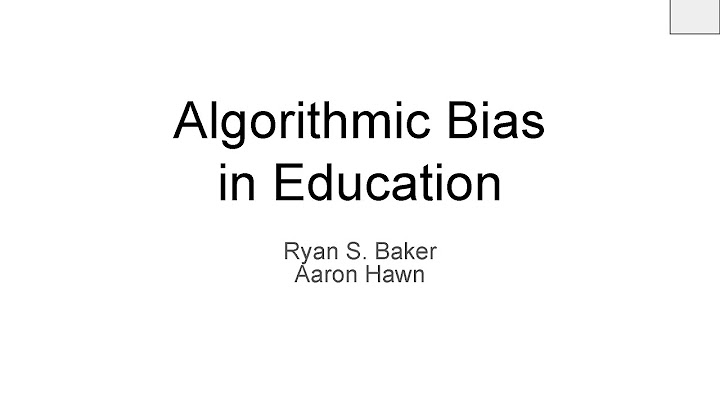Show
 
Shopping for a panel for painstaking photo work? Photographers and other graphic and multimedia artists—whether professionals, students, or enthusiasts—are concerned with translating what's on the screen to a print, a photo book, or a web site with accurate color reproduction, and they have their own set of priorities and wants in a monitor. Whether you spend all day in Adobe Photoshop and other, similar creative applications for a living, or just tinker with landscape photos in your spare time, buying the right display for color-correct work will pay off many times over, versus simply snagging the seemingly nicest panel on sale at your local electronics mart. Color accuracy, and understanding the technical terms and specs around it, are the keys to buying the best photo editing monitor for how you work. There is no single best monitor for photography; it depends on whether you're a graphics pro or just dabbling, and what the ultimate destination for your photos is. But with our help, you can find the right fit for your budget, and for what you do with your images after they leave your camera. First, Some General GuidelinesWide-gamut monitors, which let you select from a palette of more than a billion colors, are the cat's meow when it comes to photography, although it is important that they adequately cover the particular color space(s) that you will be using. If you're working with a 14-bit or 16-bit RAW file, you'll want to get a display that can show you the subtleties contained within each image you capture. Nowadays, a digital connection such as DisplayPort, Thunderbolt 3 (with Thunderbolt 4 on the way), USB-C (typically carrying a DisplayPort signal), or DVI is standard, but you will want to match up your panel with the output of your PC or Mac. Look for a display with an in-plane switching (IPS) panel and least an 8-bit lookup table (LUT); it will be able to pull images from a palate of 16.7 million colors. (More about IPS and screen types in the next section.) Moving to a top-end panel with a 10-bit LUT expands that number to more than a billion—generally speaking. To achieve that number, though, you'll need a high-end display designed for photographers, but be prepared to pay premium dollars.  Screen Technology: IPS RulesThe vast majority of LCD panels geared toward photographers and graphic artists use IPS technology, though a select few models like the LG OLED48C1 are beginning to gravitate toward OLED as 2022 trundles on. IPS has several advantages over other commonly used LCD hardware technologies such as twisted nematic (TN) and vertical alignment (VA). It offers wide viewing angles (up to 178 degrees for both vertical and horizontal); these are the maximum angular distance from looking in front of a screen to looking from the side (or above) without a change of brightness or shift in colors. IPS displays tend to have better viewing angles than VA panels, and much better ones than TN panels. Also, IPS panels are known for having the most accurate colors of the three. IPS panels in monitors designed for creative professionals tend to have higher color depth (up to 10 bits; these are the panels that can chose from a palette of more than a billion colors) than most TN or VA displays, and support a wider color gamut, often covering all—or nearly all—of the Adobe RGB and DCI-P3 color spaces. VA panels may cover the sRGB space but not much more, and TN displays have even more limited color coverage.  For now, at least, IPS panels rule the roost when it comes to photo editing, though it may not be that way forever. One promising technology is organic light-emitting diode (OLED), which seems to do well at displaying colors, but is quite expensive. OLED is used mostly on select laptop screens and on smartphones, but it hasn’t made much of an inroad into standalone monitors—yet. How to Assess Color Spaces and Color CoverageA color space is a defined range of colors. An important factor in evaluating a professional monitor to be used in photo editing is determining which specific color spaces you will be working in, and what percentage of colors in a given color space the monitor is capable of showing. Common color spaces cited in display manufacturers' specs include sRGB, Adobe RGB, DCI-P3, NTSC, and Rec.709. Photographers will be most interested in sRGB and Adobe RGB, as they were developed with photos and still images in mind. First, though, a bit about the other, more cinema-oriented color spaces. Professional monitors are often calibrated for one or more of these spaces in addition to sRGB and (in some cases) Adobe RGB, and creative artists may work with video as well as photos. DCI-P3 was defined by the Digital Cinema Initiatives (DCI), a consortium of major motion-picture producers. It is geared toward digital video projection. NTSC, developed by the National Television Standards Committee (NTSC), covers a gamut similar to Adobe RGB. And Rec.709, a standard for HDTV, is widely used in video projects. Its color space is identical to that of sRGB; the difference is in their tone response curves (aka gamma) to account for differences in ambient light. (TVs tend to be used in darker settings, while computer monitors are often set up and used in brighter rooms.) Most professional monitors have dedicated picture modes—accessible through the panel's onscreen display (OSD)—for sRGB, Adobe RGB, and DCI-P3, and we test their color coverage in all three modes. If you are purely a photographer, or a photo editor, you can ignore the DCI-P3 results, but they will come into play if you work with video.  Whether you primarily use sRGB or Adobe RGB depends on how you show your photos to the world. If your images are all to be posted online, a monitor that displays the full sRGB color spectrum is fine. sRGB is the standard color space for the web and many other applications. Even though Adobe RGB has a wider range of possible colors—sRGB encompasses only about 70% of the Adobe RGB gamut—websites will not be able to display the additional colors. What's more, if you do upload art saved in Adobe RGB to the web, it will be automatically converted to sRGB, with the colors often looking duller than if you had shot it or saved it to sRGB in the first place.  That said, Adobe RGB does have a considerably wider color gamut than sRGB, and savvy photographers may be able to coax a more vivid range of colors when printing Adobe RGB images, whether they're outputting their own prints or working with a commercial service. They will want a monitor that will display them to full advantage. Many monitors cover both bases, touting near-100% coverage for both sRGB and Adobe RGB. With those monitors, if you need to switch color spaces, you simply change the mode via the OSD. Understanding Color AccuracyA monitor's color accuracy—how close a displayed color looks to the way it is intended—is determined by a measurement known as Delta E (dE, for short). It represents the difference between the hue of a displayed color and the input that the monitor received. The dE figure that appears in monitor specs—reflecting dE2000, the current standard—is the average of a large number of individual color readings from across the spectrum. The lower the value, the more accurate the color. You don't necessarily need the best monitor for color accuracy in every respect, but you want one that excels in the specific color spaces that make sense for your photo work.  Most professional monitors come pre-calibrated with a dE of less than 2 for sRGB, and often for Adobe RGB as well. Depending on the colors involved, a dE of less than 2 would be hard for an untrained observer to discern, while a dE of less than 1 would be imperceptible to most anyone without specialized measuring equipment. In evaluating professional monitors, we use the ColorChecker function in Portrait Displays' Calman 5 color calibration program to measure the dE for a given color space. Below is an example of the results (in this case, for a Lenovo ThinkVision P32u-10 panel when we tested it in Adobe RGB mode)...  The chromaticity chart on its right shows the position of the individual color measurements, while the bar chart at far left depicts the Delta E for each point. All of the bars are short, with no points more than 2 and many less than 1. Below that chart are the figures for the average and maximum dE; the average dE of 0.88 for this monitor is excellent, i.e., it passed with flying colors (so to speak). A Bit About Calibration ToolsA few professional displays have built-in calibration tools, and some will ship with an external colorimeter that you drape over the monitor to calibrate it. The latter, typically, shows a series of color patches and uses software to create an ICC profile to properly adjust colors. When that hardware is combined with a separate ICC profile for your printer and paper type, you can use soft proofing tools, like those found in Adobe Lightroom ($9.99 per month at Adobe), on your display to see how your prints will look on paper. If your LCD doesn't ship with a calibration tool, consider getting a Datacolor Spyder or an X-Rite i1 calibrator. You'll want to calibrate your monitor at least once every 30 days.  What Kind of Finish Should I Get in a Photo Editing Monitor?Matte displays have an anti-glare coating. They can be calibrated more accurately, and they tend to show a truer image versus the more popular high-gloss displays, which give colors an oversaturated look. Plus, you won't have to deal with as many reflections. Fortunately, you can find many monitors with anti-glare screens to choose from.  Depending on your work environment and just how critical your work is, you also might consider a display with a hood. A hood will block ambient light that comes at your display from the sides and top, so you won't have to worry about light, say, coming in from a window affecting how your display looks at different points in the day. You can find third-party generic hoods for notebooks and for the iMac, but for the best fit, you're better off opting for a display that has a dedicated hood from the manufacturer included, or available as an accessory. Fortunately, many professional monitors do. Ergonomic Features to Look ForMost professional monitors have stands that support some combination of the standard ergonomic comfort features: height, tilt, swivel, and pivot control.  Pivot control lets you rotate a monitor 90 degrees on its stand joint, from landscape up into portrait mode, and back. It's handy if you tend to work with photos in this kind of vertical orientation. Pivot control also offers a surprise fringe benefit, in that when you swing the monitor up into its portrait orientation, it makes it easy to access the ports. On many displays of this kind, the ports are downward-facing in back and would otherwise be hard to reach, particularly considering that some photo-centric monitors are on the large and heavy side. Do You Need a 4K Monitor for Photo Editing? Size and ResolutionGo with as big a display as your workspace and budget can afford, and one with an appropriately dense resolution. Remember that a 1,920-by-1,080-pixel monitor is only 2 megapixels—if you're shooting with a 20-megapixel SLR, that's nothing. Thankfully, this will come naturally when looking for one that hits the other features. Most 27-inch models suited for graphical work feature at least a 2,560-by-1,440-pixel native resolution, but 4K (3,840-by-2,160-pixel) models are now widely available. Also, keep in mind that pixel density—how closely the pixels are spaced, as measured in pixels per inch (ppi)—is an important factor in determining how sharp a monitor's displayed image will look. For a given resolution, the larger the screen size, the lower the pixel density will be. We recommend that a monitor used for photo editing have a pixel density of at least 100ppi. As an extreme example, with a 32-inch screen and "6K" (6,016-by-3,384-pixel) native resolution, the Apple Pro Display XDR has a phenomenal pixel density of 216ppi. Of course, monitors with such ultra-high resolutions have rarified prices, as well. Depending on your workflow and desk space, you may want to consider a secondary display, too, regardless of what you choose as your primary LCD. iMac users, for example, can load up the majority of Lightroom's tools on the iMac's glossy 27-inch display to browse through catalogs and make adjustments, while viewing a full-screen version of the image they're working on using the second monitor, or vice versa. But we wouldn't go smaller than 24 inches in that scenario.  So, Which Monitor Should I Buy for Photo Editing?Those are the high points—obviously you'll want to read some reviews in detail before investing in a display for your personal photography work or business. Just consider how often you print and how demanding your clients are—these are good guidelines to figure out how much you want to spend on a display. If you are a hobbyist who prints occasionally and shares many photos online, or a student learning the ropes, you won't need to spend for a top-end model that a high-end wedding photographer needs, who counts on perfect prints to put food on the table. |

Pos Terkait
Periklanan
BERITA TERKINI
Toplist Popular
#2
Top 5 wilo fluidcontrol schaltet nicht ab 2022
1 years ago#3
#4
Top 8 warum kein blutspenden nach piercing 2022
1 years ago#5
#6
Top 8 o que é pirangagem 2022
1 years ago#7
#8
Top 8 o que é gluten free 2022
1 years ago#9
#10
Top 8 mondeo mk3 türgriff öffnet nicht 2022
1 years agoPeriklanan
Terpopuler
Periklanan
Tentang Kami
Dukungan

Copyright © 2024 ketiadaan Inc.


















